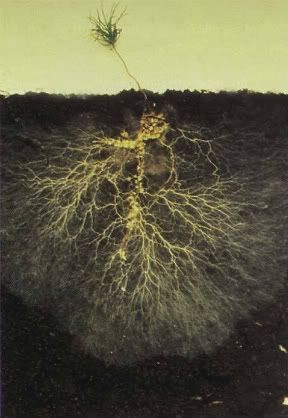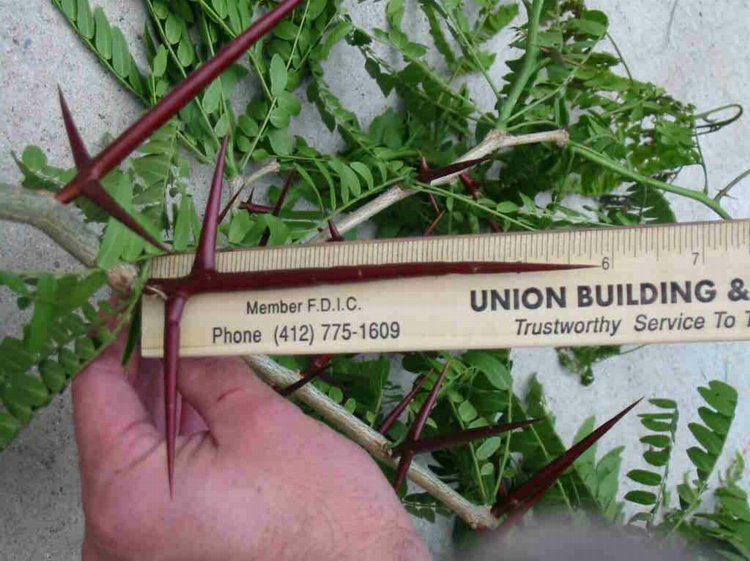Spoilage
...and the preservative power of faith.
Theme: Keep it fresh by trusting God.
Faith is like eating what is local and in season. Putting up--and putting by--canning, freezing, etc.--is like trying to hold on to our "daily bread" for more than one day. Holding on to what we have is like seeking Jesus "just for the signs" and not as our "daily bread," the true bread of heaven.
Context
We know the saying of Jesus in Luke 17:33: "Whoever tries to keep his life will lose it; and whoever loses his life will preserve it." The keeping (peripoieo, "cause to remain over and above"; "acquire, obtain, gain for oneself" BDAG) that Jesus opposes is a striving after more than I need for today, so that by preserving my more I may accumulate wealth and pile up riches--it is a getting of more than I can use today so that I may start ahead of the game of life tomorrow. The "preserving" ("give life, make alive, keep alive" BDAG) is something that only God can truly do (1 Timothy 6:13). That there is some ambivalence about a piling up of goods (and its usefulness) may be seen in a few examples of such "getting" in the Bible: for example, Jacob piles up wealth (Genesis 31:18; but so does Esau, Genesis 36:6) and Solomon has a great personal treasure (1 Chronicles 29:3, but he gives it up for the purpose of building the temple).
How should we understand the ambivalence? Perhaps it is best summed up in the wisdom tradition of Israel with this line from Proverbs: "Those who are generous will be blessed; for they share their bread with the poor." Excess is for sharing, not hoarding--or, in more polite terms, "keeping" or "preserving"--for ourselves. In a counter-intuitive way, by giving away our bread we will preserve it for the day when we need it most. Nowhere is this better seen than in the parable Jesus tells about the rich fool in Luke 12. It is not accidental that the condemnation of this fool for building "even bigger" storehouses is followed by the command not to worry about life (have faith!) and the example of the ravens (who do not sow, but are fed by God) and the lilies (a famine food, like the sycamore and like manna) whose "clothing" is more glorious than Solomon's (who, as we've already seen, accumulated great treasures of his own). The point is that it is better to be "rich in God" (to rely on God completely for all we need) than to "store up treasures for ourselves." That is how Luke 12:33-34 summarizes Jesus' teaching: "Sell your stuff and give money to the poor. Make yourselves reliable, permanent storage units in heaven for your treasure, where it cannot be stolen by thieves or eaten by moths. For where your treasure is, there your heart will be also."
Worms.
Piling up and hoarding, trying to preserve one's life, just attracts flies and leads to worms, which appear in Scripture as a metaphor for death and decay (Job 7:5, 17:14, 21:26, 24:20, 25:6). Worms (maggots) are especially appropriate as symbols of a reversal of fortune--the oppressor king, once a high and mighty accumulator of wealth, bane of the poor--has met his match. The one who was once on top of the world now rests in a grave with worms on top of him (Isaiah 14:11; Acts 12:23). In fact, hell (Gehenna) is conceived in biblical parlance as that place where so much greed and waste has accumulated that "the worm dieth not and the fire is not quenched" (Isaiah 66:24 as quoted in Mark 9:48).
Exodus 16:2-4, 9-15; Psalm 78:23-29
In the poetic form, in Psalm 78, the teacher-psalmist recounts Israel's journey through the wilderness in short, memorable stanzas. The poet's purpose is to hand on from one generation to the next "the song-worthy strength of the LORD, and the wonders he has done" (tehillot, niphle'ot). The poem does this by making a metaphor (78:2, mashal and its relatively close parallel synonym "dark sayings," chiydot) out of a shorthand account of Israel's history. The point is that the younger generation should learn the lessons of their elders and not repeat their mistakes. The younger generation should take the opposite path of the older generation, being faithful instead of faithless, loyal instead of traitorous.
The verses that concern us today (23-29) are set up by the preceding stanzas, which alternate between what God has done (deliverance from Egypt, guidance through the wilderness, provision of water in the desert) and what a previous generation of Israel has done (craving the food of Egypt, straying from the road-map drawn up for them, testing God's provision). The set up is concluded with verses 18-20, when they now demand food in addition to water, asking the provocative question whether God is able to "set a table" in the desert (vs. 19, using language similar to that of Psalm 23:5, "you set a table in the presence of my opponents"). God's response, though angry, is once again to provide for his people in abundance.
The scene is perhaps better known in its prose version from Exodus 16, where the yearning for what they've escaped ("the fleshpots of Egypt," 16:3) is explicit and the juxtaposition with their joy at deliverance (Exodus 15) is stark. Another account of the manna is given in Numbers 11, where the desert food is contrasted with the fish, the cucumbers, melons, leeks, onions, and garlic of Egypt (11:5-6). And yet another short hand version of Israel's history is given in Nehemiah 9 (see verse 20), where the dramatic outline is the same and manna is again given a supporting role. The story in Exodus 16 contains more details than the poem, including specific instructions regarding how much manna to gather each day (1 omer [1/10 ephah] per person per day, except in preparation for the Sabbath, when they would gather twice as much because there would be no gathering on the Sabbath), the command not to gather more on any one day than they needed (to gather only their "daily" bread), and information about what happened when the previous two instructions were disregarded: 1) excess manna spoiled and became wormy, and 2) those who did not gather twice as much on Friday went hungry on Saturday.
Manna? "Whaddayacallit?"
According to Exodus 16:31, manna was like coriander seed,
(Image Source, http://thymeforfood.files.wordpress.com/2008/07/coriander-seed-7.jpg)
white, with a taste like honey crackers. The same description is given in Numbers 11, with the addition that the color was that of "gum resin." Both accounts indicate that it appeared without effort on the part of the people in association with the dew fall (over night, so that it was available in the morning), but that it had to be gathered or collected for use. Numbers 11 adds some detail regarding the ways it was processed for eating:
ground in mills,
(Image Source, http://www.mindspring.com/~breadforlife/grinder.jpg)
beat in mortars,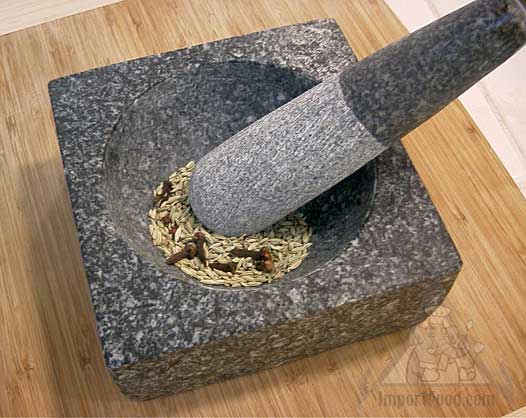
(Image Source, http://importfood.com/media/mortarpestlesq_3l.jpg)
boiled in pots,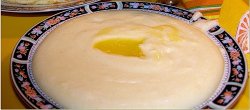
(Image Source, http://shininghappypeople.net/rwotd/media/blogs/rwotd/kasha.jpg; a nice blog article on the use of boiled grains in Russian cooking.)
made into cakes.
(Image Source, Kate in the Kitchen, http://cooknkate.files.wordpress.com/2009/03/millet-cakes-001.jpg?w=499&h=375. Of course the Israelite version of millet cakes would have been sans leeks, greens, and PORK!)
Clearly manna was used in the same sorts of way any grain, e.g., wheat, maize/corn, or rice, would have been had they been located permanently in an arable land. Because of manna's association with "the heavens" as its source--evidently because of the serendipity of its appearance and its association with the source of the dew (or rain)--manna was also called the "grain of heaven" or "heavenly food" (e.g., Psalm 78:24 and Psalm 105:40; see 1 Corinthians 10:3). This heavenly association--its grace-filled, merciful serendipity and the reference to its source--is the reason for the famous formulation: "one does not live by bread alone, but by every word that comes from the mouth of the LORD" (Deuteronomy 8:3, NRSV). Its name, manna, appears to be a play on the phrase "what is it?" (man hu', Exodus 16:15).
So what is this mystery food? Here are a few suggestions from the natural world (as opposed to the miraculous or supernatural). One thing to keep in mind is that manna is "famine food," desert food; the equivalent of the "lily of the field" or the "sycamore tree."
Alhagi maurorum (Sinai manna, camelthorn)

(Image source, Israel Plant Gene Bank database, Alhagi maurorum, http://igb.agri.gov.il/main/resultat11.pl?GENUS=Alhagi&SPAUTHOR=Medik.&SPECIES=maurorum)
A sweet tasting manna is produced from the twigs at flowering time.
Tamarisk gallica
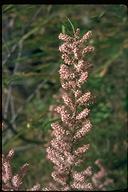
(© 1995 Saint Mary's College of California. Image source, CalPhotos, Tamarisk, http://calphotos.berkeley.edu/cgi/img_query?query_src=photos_index&seq_num=13138&one=T).
AKA saltcedar for its salinity tolerance. Considered a noxious weed, an invasive plant, in the USA. (See the USDA Plant profile for Tamarix or Tamarisk and the Invasive Tamarisk page at Earlham College.) There is some reporting of a sweet and mucilaginous manna produced in response to insect damage to the stems. See Plants for a Future (Tamarix or Tamarisk, http://www.pfaf.org/database/plants.php?Tamarix+gallica).
Fraxinus ornus (flowering ash, or manna ash)

(Image Source, Colors, Issue 69, http://www.colorsmagazine.com/issues/69/index.php?page=13).
Manna in this case comes from an incision in the living wood of the tree to which a fishing line has been attached so that the sap will flow down, forming a white tube that can be gathered when it has hardened.
John 6:24-35
The connection of John 6 with the Old Testament lection and the Psalm for this week comes from Jesus' claim to be "the bread that came down from heaven" (John 6:41, one of Jesus' I AM sayings).
